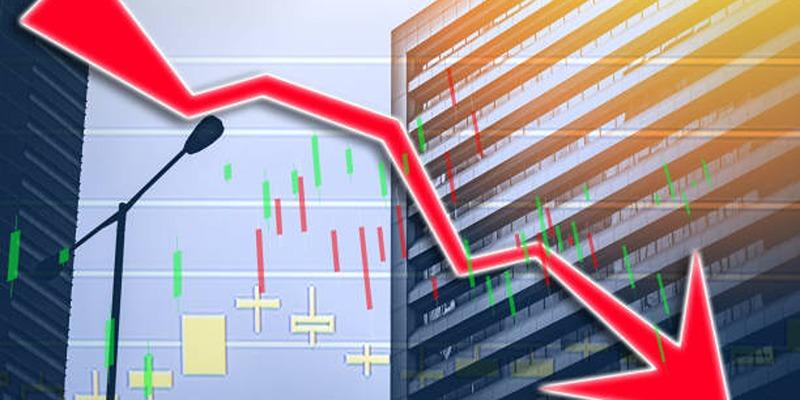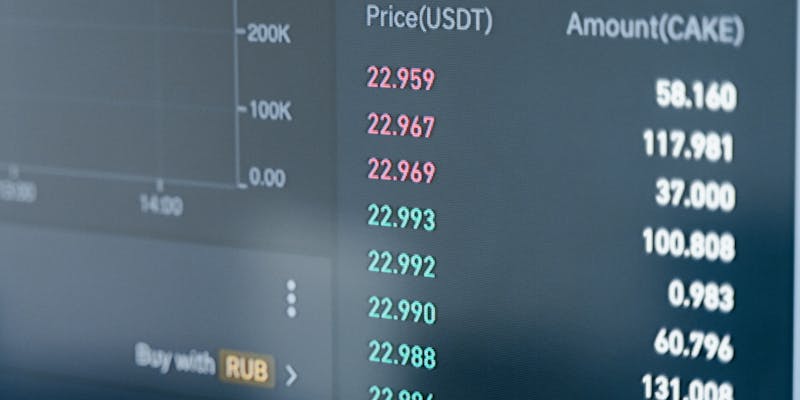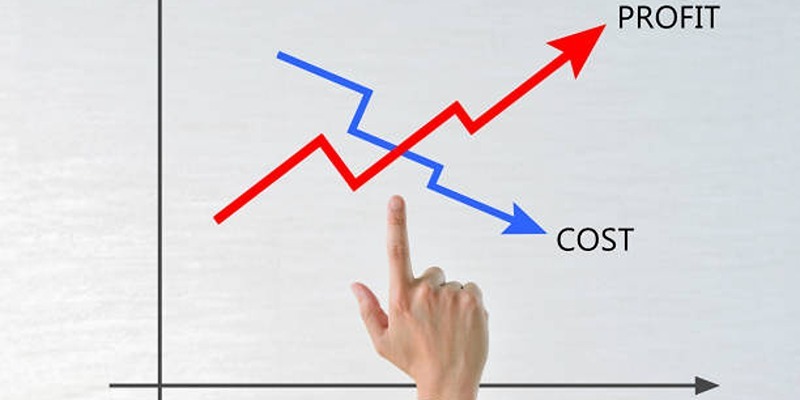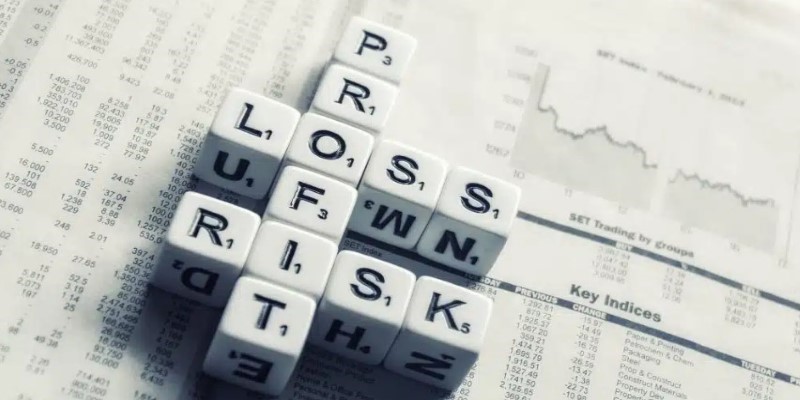What Does the Volatility Index (VIX) Indicate? A Beginner's Guide
Oct 02, 2024 By Elva Flynn
The Volatility Index (VIX), often called the fear gauge, is a key financial indicator used to measure the level of market volatility. Investors and traders look at the VIX to predict how turbulent the stock market might be in the near future. This article will explain what the VIX is, how it works, and what it indicates about the market. Understanding the VIX can help you make better decisions whether you are investing or trading. In this guide, well break it down in simple terms so anyone can understand how the VIX affects financial markets.
What is the Volatility Index (VIX)?
The VIX is an index that tracks the stock markets expectation of volatility over the next 30 days. It was created by the Chicago Board Options Exchange (CBOE) and is based on the prices of options on the S&P 500 Index (SPX).
In simple terms, the VIX measures how much the market thinks the stock prices will fluctuate in the near future. When the VIX is high, it means traders expect a lot of market movement (volatility). When its low, it indicates a calm, stable market.
Key Points About the VIX:
- The VIX measures expected volatility, not actual market movement.
- It focuses on the next 30 days of potential volatility.
- It is calculated based on the prices of options contracts, which are financial tools investors use to hedge or speculate on market movements.
How is the VIX Calculated?
The VIX is derived from the price of S&P 500 Index options. These are contracts that give investors the right to buy or sell the S&P 500 Index at a specific price within a certain period. The VIX uses both call and put options to calculate the expected volatility.
The calculation involves complex mathematical formulas that assess how much investors are willing to pay for protection against future market volatility. The higher the prices of these options, the higher the VIX will be, which indicates that investors expect more volatility.
In essence, the VIX is a reflection of investors' fear and uncertainty about the future of the stock market. If investors are nervous and expect wild price swings, the VIX will rise. On the other hand, if they expect stability, the VIX will remain low.
What Does the VIX Indicate?
The VIX is often seen as a fear gauge for the stock market. Heres what different levels of the VIX might indicate:
Low VIX (Below 20):
When the VIX is below 20, it usually indicates a calm, stable market. Investors are not expecting significant price swings. This can be a sign of confidence in the economy and stock market.
Moderate VIX (20-30):
A VIX reading between 20 and 30 suggests a moderate level of uncertainty. This can happen during times of mild economic concern or before major events like elections or important economic reports. Investors are cautious but not overly worried.
High VIX (Above 30):
When the VIX is above 30, it indicates high volatility. This usually happens during market downturns, economic crises, or other major events. A high VIX means investors are anxious and expect significant market movements.
A very high VIX can signal panic, while a low VIX may indicate complacency. However, its important to remember that the VIX is not perfect and can sometimes give false signals.
Why is the VIX Important for Investors?
For investors and traders, the VIX serves as a useful tool for understanding the markets mood and preparing for potential changes. Here's why it's important:
Risk Management:
Investors use the VIX to gauge risk. A rising VIX suggests that risk is increasing, and investors might adjust their portfolios by moving into safer assets like bonds or gold. In contrast, a low VIX may encourage investors to take on more risk in search of higher returns.
Market Timing:
Some traders use the VIX to time their trades. For instance, if the VIX spikes, it could signal a market sell-off, which may present buying opportunities for long-term investors. Conversely, a very low VIX might be a warning that the market is due for a correction.
Hedging:
Many investors use options as a way to protect their portfolios from sudden market downturns. By watching the VIX, they can gauge when to buy protective options contracts, such as put options, to safeguard their investments during volatile times.
Sentiment Analysis:
The VIX gives insight into the overall sentiment of the market. When the VIX is high, it indicates fear and uncertainty among investors. When its low, it suggests that investors are confident and optimistic about the future.
How to Use the VIX in Your Investment Strategy?
While the VIX is a powerful tool, it should not be used in isolation. Investors should consider a wide range of factors when making decisions. Here are a few tips on how you can use the VIX effectively:
Monitor Market Trends:
Keep an eye on the VIX to see how it moves with the overall market. A sudden rise in the VIX may signal that the market is about to experience a downturn. This could be a good time to review your portfolio and consider making adjustments.
Dont Panic Over Short-Term Spikes:
The VIX can sometimes spike due to temporary events like political uncertainty or economic reports. Short-term movements in the VIX dont always lead to long-term trends. Stay focused on your long-term investment goals and avoid reacting to every market move.
Use the VIX as a Complementary Tool:
The VIX should be used alongside other indicators like market fundamentals, economic data, and technical analysis. This will give you a more complete picture of the market and help you make better decisions.
Consider Volatility-Based Investment Products:
There are specific financial products, such as VIX futures and exchange-traded funds (ETFs), that allow investors to directly bet on or hedge against volatility. These products can be useful for advanced traders looking to capitalize on expected market movements.
The Limitations of the VIX
While the VIX is a valuable tool, it does have its limitations:
Short-Term Focus:
The VIX is based on a 30-day forward-looking timeframe, meaning its only useful for predicting short-term volatility. Long-term investors may not find it as relevant for their strategies.
False Signals:
The VIX can sometimes provide false signals. For example, it might rise due to a temporary event, only for the market to calm down shortly afterward.
Market Dependency:
The VIX is tied specifically to the S&P 500 Index. If youre investing in other asset classes or markets, the VIX may not provide as much useful information.
Conclusion
The Volatility Index (VIX) is a powerful tool for understanding market volatility and investor sentiment. Whether you are a long-term investor or a short-term trader, the VIX can provide valuable insights into market risk and potential opportunities. By learning to interpret the VIX, you can better manage your portfolio, hedge against risks, and make more informed financial decisions. However, like all tools, the VIX has its limitations and should be used in conjunction with other market indicators. It offers a snapshot of how volatile the market is expected to be in the short term, but should not be the sole factor in decision-making. By understanding what the VIX indicates and how it works, you can become a more informed and confident investor, prepared to navigate both calm and turbulent markets.

Bilateral Trade Agreements and Their Importance in the World Economy

How Are 401(k) Loans Taxed? A Comprehensive Overview

The Role of Accountants: Simplified Responsibilities and Real-World Examples

Margin Trading: Pros, Cons, and Is It Right for You?

What Does the Volatility Index (VIX) Indicate? A Beginner's Guide

How Excess of Loss Reinsurance Operates in the Insurance Industry?

What is Risk Reversal? A Beginner's Guide to Options and Hedging

Listing the Best Real Estate Crowdfunding Sites in 2022

Demystifying the FDIC: An In-Depth Look at Its Definition and Limits

